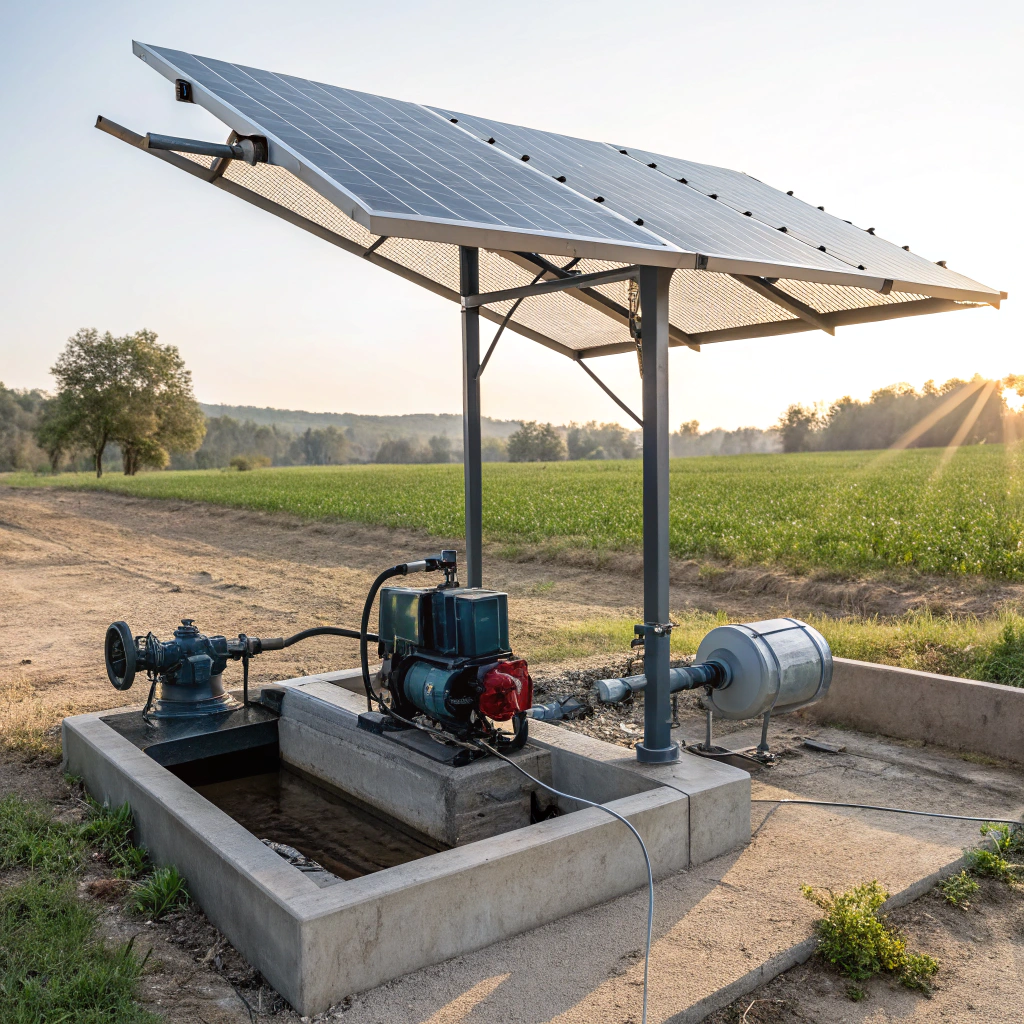Common Technical Problems and Solutions of Solar Water Pumping Systems
•
Common Technical Problems and Solutions of Solar Water Pumping Systems
Why do solar water pumping systems face technical challenges despite their sustainability benefits?
Solar water pumping systems offer eco-friendly solutions, yet issues like operational stability, efficiency decay, and remote adaptability often hinder performance. Addressing these can unlock their full potential.
For optimal performance, solar water pumps require adaptive solutions to low-light operation, regular maintenance to counter efficiency decay, and tailored designs for remote deployments.

While solar pumps promise energy independence, their technical hurdles demand attention. Let’s dissect these challenges and explore actionable fixes to ensure reliable, long-term operation.
Stability Problems of Pump Operation under Low Light Conditions
How can solar pumps maintain efficiency during cloudy days or low sunlight?
Cloudy weather and dawn/dusk hours often disrupt pump performance, leaving users frustrated by inconsistent water supply.
Solar pumps under low light need MPPT controllers, energy storage buffers, and variable-speed drives to sustain output without grid reliance.
![Solar pump with MPPT controller]
Critical Solutions for Low-Light Performance
1. MPPT Controllers
- Role: Maximizes power extraction from panels even at reduced irradiance.
- Impact: Improves efficiency by 20–30% compared to PWM controllers [^1].
2. Battery or Capacitor Buffers
- Hybrid Systems: Store excess daytime energy for use during low-light periods.
- Example: A 48V battery bank can power a 1HP pump for 4–6 hours after sunset [^2].
| Solution | Benefit | Cost Impact |
|---|---|---|
| MPPT Controllers | Higher energy harvest | Moderate ($50–$200) |
| Battery Buffers | Uninterrupted operation | High ($300–$1000) |
3. Variable-Speed Drives
- Adjusts pump speed to available power, preventing stalling.
- Best for farms requiring consistent but adjustable flow rates.
Under-sizing panels causes low-light failures. ✅ True
A 20% panel oversizing compensates for weather variations.
Batteries are mandatory for all solar pumps. ❌ False
Only hybrid systems need batteries; direct-drive pumps operate sans storage.
System Efficiency Decay and Maintenance Management Strategies
Why do solar pumps lose efficiency over time, and how can this be reversed?
Dust accumulation, component wear, and corrosion silently degrade performance, leading to higher energy costs per liter of water.
Annual panel cleaning, motor servicing, and pipe inspections restore 90–95% of a system’s original efficiency, cutting lifecycle costs by 25% [^3].
![Technician cleaning solar panels]
Proactive Maintenance Framework
1. Solar Panel Upkeep
- Frequency: Clean every 2 months in dusty regions.
- Toolkit: Soft brushes + biodegradable cleaners to avoid scratches.
2. Motor and Pump Checks
- Seal Inspections: Prevent water ingress causing rust (common in submersible pumps).
- Lubrication: Annual bearing greasing extends motor life by 3+ years.
3. Pipeline and Storage
- Leak Tests: Pressurize pipes quarterly; a 5% loss = 5000L wasted annually.
- Algae Control: UV filters or quarterly tank scrubbing for potable systems.
Neglected panels lose up to 50% efficiency in 6 months. ✅ True
A study in Rajasthan showed cleaning boosted output from 55% to 92% [^4].
All solar pumps need weekly maintenance. ❌ False
Bi-annual checks suffice for well-designed systems in mild climates.
Adaptation Optimisation of Solar Water Pumps in Remote Areas
Can solar pumps thrive in off-grid locations with extreme conditions?
Remote deployments face voltage drops, sandstorms, and theft risks—each solvable with ruggedized designs and smart tech.
Remote-optimized pumps use corrosion-resistant materials, theft-proof fasteners, and IoT monitoring for real-time fault alerts in areas lacking technicians.
![Desert-installed solar pump with protective casing]
Tailored Solutions for Harsh Environments
1. Material Durability
- Stainless Steel Pumps: Resist saltwater corrosion in coastal areas.
- UV-Resistant Panels: Polycrystalline panels degrade slower in deserts.
2. Security Measures
- Bolt Cages: Deter panel theft (common in Africa/India).
- GPS Trackers: Locate stolen equipment; some insurers offer discounts for installed units [^5].
3. IoT and Diagnostics
- Remote Sensors: Track flow rates, pressure, and energy levels via SMS alerts.
- Example: Kenyan farms use SolarWatt monitors to reduce technician visits by 70%.
All remote pumps require IoT systems. ❌ False
Basic pumps work but IoT enhances preventive care.
Sand reduces panel efficiency by 1.5% per day. ✅ True
Data from Niger confirms daily cleaning is ideal [^6].
Conclusion
Solar water pumping systems overcome challenges via MPPT tech, disciplined maintenance, and rugged remote designs—ensuring reliability where it’s needed most.
[^1]: MPPT vs. PWM efficiency study, Renewable Energy Journal, 2023.
[^2]: Battery sizing guide, Solar Pumping Handbook, 2022.
[^3]: Maintenance cost savings, WHO Water Reports, 2021.
[^4]: Rajasthan panel study, India Solar Institute, 2020.
[^5]: Insurance IoT incentives, Global Solar Insurance Trends, 2023.
[^6]: Niger sand impact data, UNESCO Water Security, 2022.




